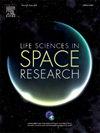Approaching ocular risks during spaceflight with 3D printing: Technical strategies to protect astronaut vision
IF 2.8
3区 生物学
Q2 ASTRONOMY & ASTROPHYSICS
引用次数: 0
Abstract
Long-duration spaceflight poses significant risks to ocular health due to prolonged microgravity exposure and space environmental stressors, contributing to conditions such as Spaceflight-Associated Neuro-ocular Syndrome (SANS) and Spaceflight-Associated Dry Eye Syndrome (SADES). These conditions, along with radiation exposure and risk of ocular trauma in resource-limited environments, necessitate development of innovative countermeasures to safeguard astronauts' vision, particularly for future planetary missions such as Mars. Traditional ophthalmic care depends on specialized equipment and materials impractical for cargo limitations and transport in space, highlighting the need for adaptive solutions.
Advances in 3D printing and bioprinting offer an innovative approach to space ophthalmology by enabling on-demand fabrication of customized eyewear, contact lenses, moisture chambers, radiation-shielding lenses, and surgical tools. Furthermore, emerging bioprinting capabilities may facilitate production of biocompatible tissues for ocular repair. The precision, adaptability, and mission-specific applicability of 3D printing provide a strategic advantage to address preventive and therapeutic ocular health needs. However, challenges include optimizing biocompatible materials, refining high-resolution printing techniques, and ensuring structural and functional viability of printed tissues in space conditions. Further research is required to improve material durability, integrate protective elements such as boron nitride nanotubes, and adapt 3D printing processes to the constraints of microgravity.
Beyond space medicine, 3D printing applications in space can drive innovations for ophthalmic care on Earth, from customized intraocular lenses to regenerative therapies. This review highlights the critical role of 3D printing in space ophthalmology and need for continued development and deployment to ensure success of future deep-space missions.
利用3D打印技术处理航天飞行中的眼部风险:保护宇航员视力的技术策略
由于长时间的微重力暴露和空间环境压力源,长时间航天飞行对眼部健康构成重大风险,导致诸如航天飞行相关神经-眼综合征(SANS)和航天飞行相关干眼综合征(SADES)等病症。这些情况,以及资源有限环境中的辐射暴露和眼外伤风险,需要开发创新对策,以保护宇航员的视力,特别是未来的火星等行星任务。传统的眼科护理依赖于特殊的设备和材料,由于货物限制和空间运输的限制,这突出了适应性解决方案的必要性。3D打印和生物打印技术的进步为太空眼科提供了一种创新的方法,可以按需制造定制眼镜、隐形眼镜、保湿室、辐射屏蔽镜片和手术工具。此外,新兴的生物打印能力可能促进用于眼部修复的生物相容性组织的生产。3D打印的精确性、适应性和特定任务的适用性为解决预防和治疗性眼部健康需求提供了战略优势。然而,挑战包括优化生物相容性材料,改进高分辨率打印技术,以及确保打印组织在太空条件下的结构和功能可行性。需要进一步的研究来提高材料的耐久性,整合氮化硼纳米管等保护元件,并使3D打印工艺适应微重力的限制。除了太空医学,3D打印在太空的应用还可以推动地球上眼科护理的创新,从定制人工晶状体到再生疗法。这篇综述强调了3D打印在太空眼科中的关键作用,以及继续发展和部署以确保未来深空任务成功的必要性。
本文章由计算机程序翻译,如有差异,请以英文原文为准。
求助全文
约1分钟内获得全文
求助全文
来源期刊

Life Sciences in Space Research
Agricultural and Biological Sciences-Agricultural and Biological Sciences (miscellaneous)
CiteScore
5.30
自引率
8.00%
发文量
69
期刊介绍:
Life Sciences in Space Research publishes high quality original research and review articles in areas previously covered by the Life Sciences section of COSPAR''s other society journal Advances in Space Research.
Life Sciences in Space Research features an editorial team of top scientists in the space radiation field and guarantees a fast turnaround time from submission to editorial decision.
 求助内容:
求助内容: 应助结果提醒方式:
应助结果提醒方式:


